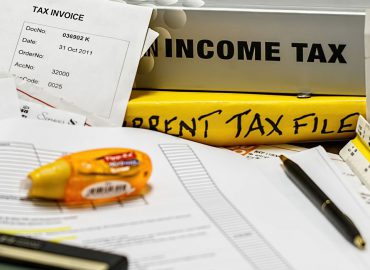
Apurva Maheswari CA

Akash Sanghai CA
BACKGROUND:
Standards on Auditing (SA)- 500 explains what constitutes audit evidence
and SA 501 deals with specific considerations by the auditor in obtaining
sufficient appropriate audit evidence. (Like inventory)
SA -501 requires the auditors to obtain sufficient appropriate evidence for
inventories. The guidance note specifies:
(a) Attendance of auditors at physical inventory counting to
evaluate and observe the management’s count procedures;
inspect the inventory; and Perform test counts.
(b) Performance of audit procedures to determine accuracy of
inventory count results.
Due to COVID-19 outbreak conducting physical verification of inventories
on 31-03-2020 by the management and its attendance by the auditors
would be not only challenging but impracticable also. The followings are
the possible challenges:
(1) Where the management is unable to conduct physical inventory
counting as at the year end, it should inform the auditors the
reasons thereof.
(2) It is also suggested that the Physical inventory may be
conducted by management at a date other than the date of
financial statements and for that.
• the auditors should adopt the approach of Roll-Forward
or Roll-Back procedures which would be a viable option
under the circumstances. Of course the existence of
internal control over inventories must be examined by
the auditors. This approach of ROLL system should not
be applied blanket on all the clients.
Further where physical counting is impracticable then Alternative audit
procedures is required to be complied with as given in SA 501 . These are
primarily to obtain sufficient and appropriate audit evidence regarding the
existence and condition of inventory. However, if it’s not possible to apply
such alternate audit procedures, the auditor shall modify the opinion in
the auditor’s report in accordance with SA 705.
Examples of Alternative Audit Procedures. :
(a) Inspection of documentation of the subsequent sale of
specific inventory items acquired or purchased prior to the
physical inventory counting, may provide sufficient appropriate
audit evidence about the existence and condition of inventory.
(b) Using the work of internal auditor: SA 610permits to use
the work of internal auditor regarding inventory verification.
However, external auditor’s responsibility is not reduced by
using of the work of the internal audit function. The external
auditor still needs to perform and evaluate the competence,
independence and objectivity of the internal auditor, its plan etc.
Finally, a report should also be received from the internal
auditor such as the inventory counting reports, memorandum of
observations on the inventory counting, conclusions reached, etc
(c) Engaging other Chartered Accountant to attend
physical verification :
The auditor (after discussion with the management) may
appoint other Chartered Accountant to attend physical counting.
The Guidance note suggest that the external auditors where
feasible, may virtually participate in physical verification
through video applications. A written agreement should be
made with the management for the use of another chartered
Accountant.
(d) Use of technology in Inventory Counting
Where physical attendance by auditors is not possible, then the
inventory counting may be conducted remotely via video call
with the help of technology. Auditors would need to ensure the
security, practical constraints etc on these applications. It is
Virtual attendance. Caution is needed for obsolete or
damaged stock. Further, auditors may carry out verification for
certain items on test basis at a later date. It is a Leveraging
technology to help with inventory counting. confirming
visually with key staff and using voice technology are some of
the measures for this system.
INVENTORY AT THIRD PARTY:
Reliance may be placed on confirmation received from third party
regarding the quantities and condition of the inventory held on behalf of
the entity.
CONCLUSION:
1. The primary responsibility of the auditor is to physically attend
the inventory counting. Even in situations where the auditor
opts for alternative audit procedures, the auditor is not absolved
from the primary responsibility in respect of attendance at
physical inventory counting and thus cannot include a division
of responsibility in the auditor’s report in respect of alternative
audit procedures carried out.
2. Where alternative audit procedures are adopted which provide
sufficient appropriate audit evidence to conclude that inventory
is free from material misstatement, the auditor’s opinion need
not be modified.
3. Where it is not possible to perform alternative audit procedures
and the auditors is unable to obtain sufficient appropriate audit
evidence for inventory balances, the auditor may modify his
opinion.
Disclaimer Information in this publication is intended to provide only a
general outline of the subjects covered. It should neither be regarded as
comprehensive nor sufficient for making decisions, nor should it be used
in place of professional advice. The Authors accepts no responsibility for
loss arising from any action taken or not taken by anyone using this
publication.
■■

